Let’s take a closer look at Claude Monet’s Waterloo Bridge series. A beautiful display of color and atmosphere, as you would expect from Monet.

The series includes over 40 paintings created from 1899 to 1904. Though many have since been sold to private collections, lost, or destroyed; only a handful remain visible to the public. Which is unfortunate, as Monet intended for the series to be judged as a whole. In 1903, he wrote to his dealer Durand-Ruel:
“I cannot send you a single canvas of London… It is indispensable to have them all before me and to tell the truth; not one is definitely finished. I develop them all together.” (Source – The Met Museum)
Few people would have ever witnessed the series in its entirety. I can only imagine it being a beautiful sight. This video provides a partial glimpse of what the series looks like.
Monet painted the series from his room in the Savoy Hotel, though he continued working on the series back in his Giverny studio. Whilst the paintings appear fresh and spontaneous, Monet didn’t complete them in a single session. He likely had several paintings going at the same time as he tried to capture nature’s fleeting effects.
The series is essentially a study of color and light. The consistent subject allows for clearer observations of the relationships between color, light, and weather. This wasn’t Monet’s first time doing this. He also painted a series on water lilies, the Rouen Cathedral, haystacks, the Houses of Parliament, and the Charing Cross Bridge just to name a few. He painted the Charing Cross Bridge series around the same time and from the same room as the Waterloo Bridge series. That cluttered room must have been a wonderful display of art.
Anyway, let’s take a look at a few paintings from the series, starting with a simple sketch done in 1899. This must be one of his earliest depictions of the scene. Look at those wild, exploratory marks. It’s not refined or pretty, but it’s beautiful in its own right, especially when you know all the paintings that stem from this sketch.

The painting below is perhaps my favorite from the series. The more I look, the more it captures me. It’s also a great example of broken color. Notice all the blue, green, purple, yellow, and orange tones woven together. Both distinct and part of a greater whole.

This one (below) is more subtle. The thick fog blocks out the light. Clarity is low and only vague details are visible. By itself, the painting is rather understated. That’s perhaps why Monet wanted it to be judged as part of the whole series, where it plays the important role of complementing the other feature works.
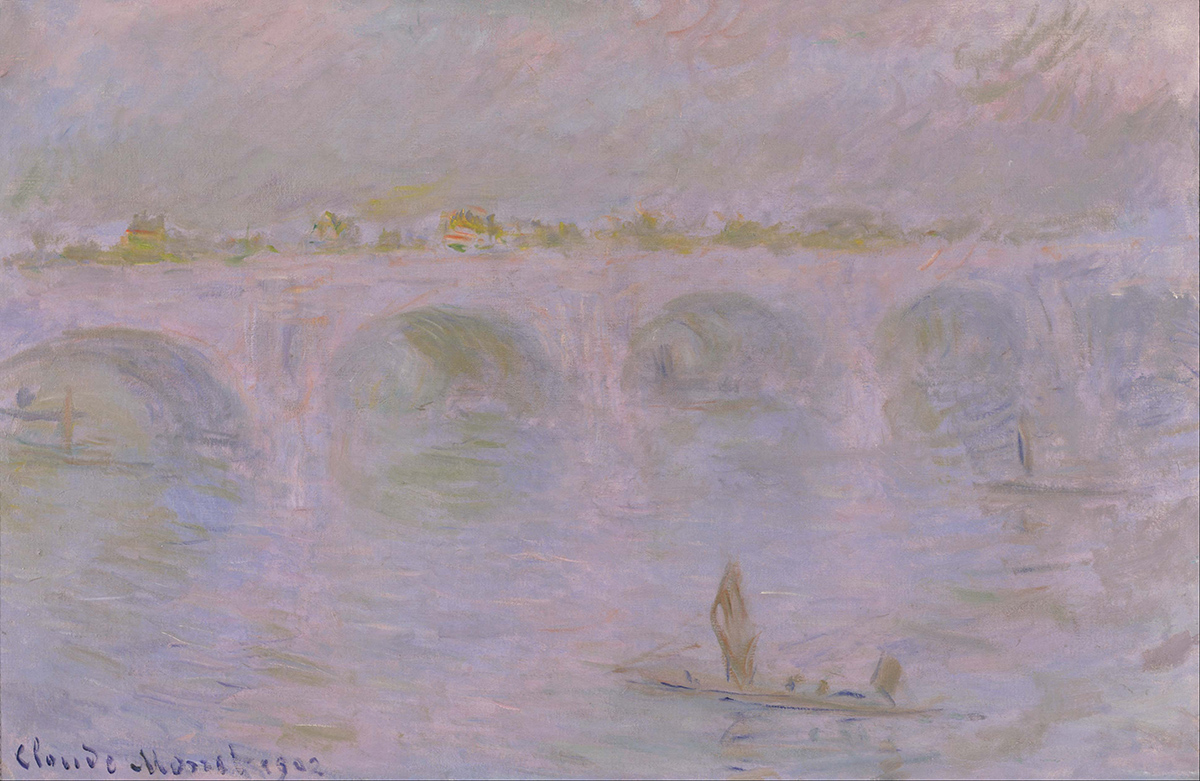
Here’s another subtle painting from the series, but this time with cooler tones. There’s an eerie feel to it. Might have something to do with the idea that those boats will shortly disappear into the fog.

In this painting, light is bursting through the foggy canopy. There’s a sense of drama, with bursts of light, color, and a few dark accents amongst the gray atmosphere. Notice how there’s more contrast in this painting compared to the two prior. More contrast usually means more drama, activity, movement, etc.

Below is a moody depiction. It goes well this this quote:
“The fog in London assumes all sorts of colors; there are black, brown, yellow, green, purple fogs, and the interest in painting is to get the objects as seen through these fogs.” Claude Monet

This one reminds me of Impression, Sunrise. A pleasant contrast between ambient cool colors and intense warm colors. I’m curious to see what this painting looks like in person, as the colors seem very intense compared to his other work. Photos can sometimes be misleading and I question whether someone has bumped up the saturation on this photo.

There’s more clarity in this painting. Must have been a relatively clear day in London. Monet painted in a high key, meaning all the colors are compressed towards the light end of the value scale. Notice how there’s not much of a jump from the darkest dark to the lightest light. Compare this to the stygian blacks and brilliant highlights used by the Old Masters like Rembrandt.

Additional Resources
- Artists’ Letters by Michael Bird. I just ordered this, as I believe it has some of Monet’s letters to his art dealer and others. I’ll let you know how it is.
- Wikiart – Large resolution photos of Monet’s paintings.
- How to Paint like Claude Monet
Want to Learn More?
You might be interested in my Painting Academy course. I’ll walk you through the time-tested fundamentals of painting. It’s perfect for absolute beginner to intermediate painters.
Thanks for Reading!
I appreciate you taking the time to read this post and I hope you found it helpful. Feel free to share it with friends.
Happy painting!
Dan Scott

Draw Paint Academy

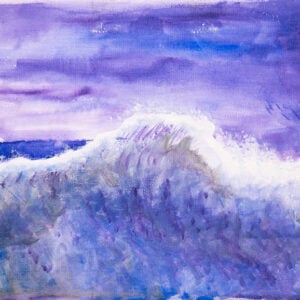
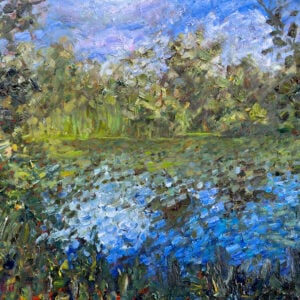
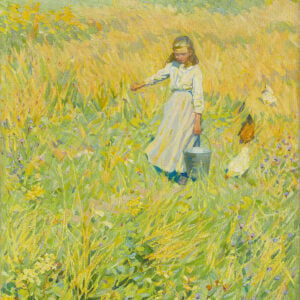
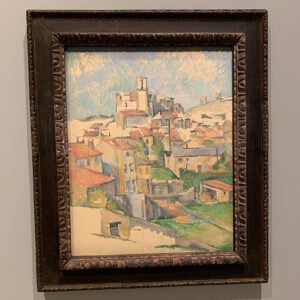
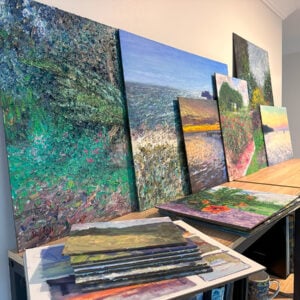
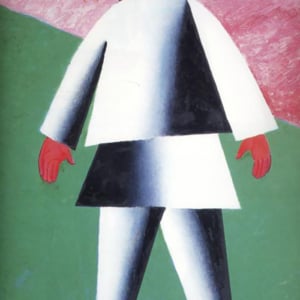
Thank you so much for analysing Comparatively Monet ‘a The bridge paintings .
Thank you very much! Great article!
So hey I have been looking on the internet tryn to find out who he is who all of them are a couple from California had moved to my community when ever the couple had passed they left all of the belongings to their care taker she was burning the paintings I pulled this one out before it got sizzled listen this thing is old the canvas is so old oldest I have seen I’m a art type nobody but I ain’t no dummyi know what has had the touch of some body special here I think I have happened uponsomething truly soecial
Enjoyed your commentary on these works of Monet. Thank you so much it was very enlightening no pun intended.
A beautiful painting.i love all the different versions.it is amazing how an artist can copy a painting but they can change it and make it there own.its fun.
ENJOYED
Your insight and appreciation for these works expands my own. Thank you. When money is less tight, I look forward to signing up for your class.
I enjoy and hope to learn each time I read your e mails. Money is tight right now so later I’d love to take your class..
With not being able to work, right now, because of the Covid 19 Virus, our budget is tight. However, I do hope to join one of your classes soon.
Thank you very much, Dan!
I always enjoyed reading all your posts: interesting, educational, emotional and beautiful!
Combination of colors and light in Monet’s painting are very attractive.
I enjoy and hope to learn each time I read your e mails.
Thank you very much, Dan!
Excellent comments and links on his work, thank you.
Thanks. Really enjoyed this. Appreciate you takin the time to analyze these beautiful works.
Thank you for sharing Monet’s work and walking us through each painting. I enjoy reading your emails and always learn something new. Thank you once again for taking time and sharing your experience and knowledge with us.
You are a wonderful teacher. Your insight brings exciting new thoughts, ideas, and a way of thinking that I truly have not done before. I am a novice, ‘wannabe’ painter. But, as someone who appreciates art and loves being in museums, you open up my mind and my eyes in totally different ways.
Thank you so much for writing these articles. I LOVE how you explain art so easily and I love when you give examples under the “when to use” section. This really helps me to see how I can incorporate each approach or technique into my art. I also love the examples you provide from the old (and new) Masters and links to interesting videos. I look forward to all of your articles Dan!
I never knew Monet painted, London scenes…..incredible……wonder how many days in London, to capture the changes.
Wonder if these ever go on at an Art tour , to different countries.
Thank you for words of wisdom
I think I would sign up for class in winter,when 2 feet snow outside.
Perfect timing as a new Monet exhibit is opening in Chicago.
Thanks
Thank you Mr Dan for an incite on Monets paintings. They were beautiful.
Just Amazing,
I enjoyed the article very much, I had seen Monet’s work before but appreciated this article even more especially the analyse.
Thank you for sharing.
Enjoyed reading your comments and comparrison on the Monet paintings. He is one of my favorites.
This is a wonderful post, Dan, both for the information you impart and for the inspiration it provides. Although I don’t have a room at the Savoy, I’m now going to look around my world to find a subject to “study” through painting.
Thanks for an informative and excellent comparison on this painting. I enjoy Monet’s work and will appreciate it even more .
Amazing post! Thank you so much for your analysis. It was very thought provoking. You are extremely generous with your knowledge.
i have enjoyed all the emails you have sent so far. ,i read every one when they arrive then i go back to first one and concentrate on all you say some times try it out. then go on to the next day . but i keep everyone to refere to in the future so glad i asked you to send to me. reguards carol
e mail curtisphilp42@gmail.com thank you Dan
Dan thank you so much for sharing your knowledge about this series along with the paintings! Your posts help me so much, as did your classes, as I go along my painting journey.
thanks for showing us what a master of the series teaches us about light and atmosphere. we should not hesitate to approach a familiar subject if we are willing to closely observe the world. Kevin Macpherson’s “Reflections on a Pond” contemporary series is a great lesson in this technique.
Absolutely wonderful to see the majority of the full study of the Waterloo Bridge. Thank you for sharing. I’ll look forward to hearing about his letters to his art dealer. That book might be one that needs to added to my library. 😎
Thank you for this virtual Monet exhibition, really inspiring. Appreciate your notes for each work.
I more I see the more I am awestuck….I borrow your thoughts. Its Autumn here, and I am completely absorbed in Monet’s water lilies.
This article is one of the best on understanding Monet; specially the play of light and colours setting different mood.
Thank you so much .
Thank you so much! I always enjoy what you post : )
A lot of people don’t understand why these great painters used the colors they did as you said the fog that is what they seen. Some used dark colors browns, blacks, oranges, yellows. Because they where painting by candle light. There painting was a moment in history, they captured it. Ever painting tells a story.
Perhaps only Monet could have seen and appreciated the many hues in foggy London of his time. Thanks for the photos and comments.
Thanks for taking the time to explain these brilliant masterpieces from Monet. Really enjoyed looking at these paintings and your comments.
Many thanks
Please refresh my memory (as to) the definition of: ‘broken color’.
I think it means laying two colors beside each other (to see) a third color. No blending at all!
Is this even close?
Hi Debbie – yes essentially. If you look up close at Monet’s work, you’ll notice all these distinct colors (they are not blended). This post has more info on it: https://drawpaintacademy.com/broken-color/
Actually it is layering colors in a way that the bottom color shows though almost like a wash I have used it in acrylic painting in a glass jar you could see the jar and what was behind it. Though the jar
No broken color is the layering of colors on top of one another allowing the first color to bleed though
Dan, I really enjoyed looking at these great paintings and reading your explanations.
Thank you so mush for sharing your knowledge.
I love Monet! I enjoy the menagerie of color he used in the Waterloo Bridge. My fav The garden the many paintings of his garden @ his Villa in France.
That is a wonderful painting not many know the children are his sons, I believe that the lady is a nanny. It is his home. Good eye
I am learning so much from your masters’ series. I have given you web page to an art teacher in Alaska.
Loved it! Lightbulb came on for me.
Thank you Dan, you have explained colour mixing in the most appropriate manner, and showing Monet’s artwork reveals the juxtaposition of colours in light or dark shades. Somehow in watercolour this could be a bit daunting as the medium has the tendency to muddy some areas.
Thank you for your generosity in sharing your observation which is a great teaching method and I am sure all who can attend your classes will benefit greatly from your inspired views. I wish you were around when I was learning to paint. At 81 the mind is willing but the flesh is slow to follow. However, all your emails are not wasted on deaf ears, your excellent tips get recycled to younger associates.
Thank you for turning our attention to the power of a limited palette as demonstrated in Monet’s disciplined use of muted colors to achieve maximum light effects. Cannot wait to jump back into my painting with new excitement wanting to apply these principles to my work and see what could happen!
Regarding your exceptional studies of Monet’s perception and technique, I have a significant regret:
For every painting you displayed, not one of them indicates what museum they’re in.
By leaving this decisive information out, you deny us the opportunity to know where the beautiful canvases can be found. If I don’t know where the paintings are located, I can’t see them, displayed in the galleries. This is terribly unfair.
For all the positive comments you’ve received, most of these people will never see these paintings, since they don’t know where to view them. It shouldn’t be this way.
I’ve been to the Denver Art Museum in Denver, Colorado, the Worcester Art Museum in Worcester, Massachusetts, the National Gallery of Art in Washington, D.C., and you have selections from these establishments. Other paintings you chose, I recognize but my memory can’t go to where the artworks are found. I’ve been to art museums in 32 of the United States, plus art museums in Canada, England, France, Germany and Austria. Art is an essential factor of my life. I so regret not knowing where I can see the paintings in your article.
Thank you so much, Dan, for this informative and inspiring lesson on Monet’s life and art. Your brilliant analyses of Monet’s journey and paintings greatly expanded my understanding of his work brilliance, dedication, and work. The links that you provide are very helpful. As a teacher, you are second to none!
With much appreciation, Irit
From studying the masters , I believe that in this painting it was a rainy day the colors used tells the story. The artist of this day painted things as they see them. The artists who paint ed with dark colors yellow, orange, browns , dull colors where painting by candle light try and light one candle in a small room turn off the lights see what colors you see. His works all tell a story,